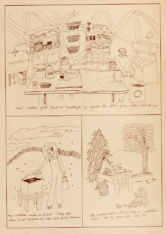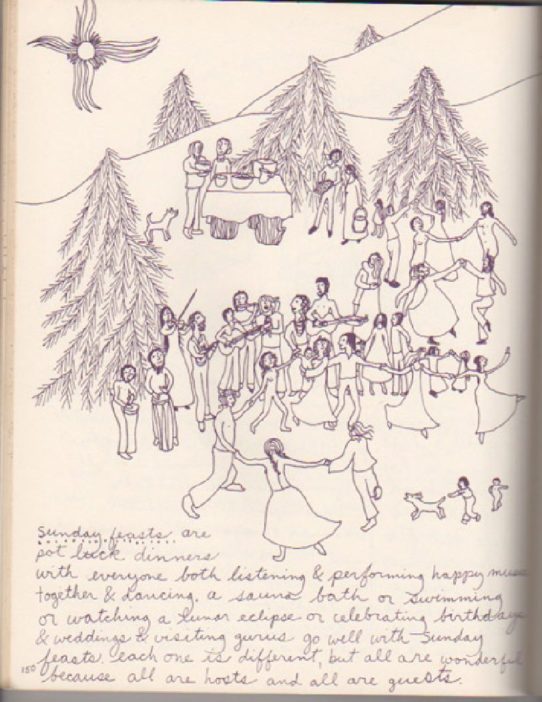Just as the counterculture food movement varied from person to person and kitchen to kitchen, the presumed role of women within the movement also varied, depending on the source. In the popular vegetarian cookbook Laurel’s Kitchen, for instance, women were asked to be the central figures of the movement since they were the traditional “keepers of the keys” to the household. For others, however, the movement was less focused on the “who”, and more focused on the “how”. This is where Alicia Bay Laurel and her manual Living on the Earth come in.
Bay Laurel’s Living on the Earth, a manual for successful communal living, is much more than a traditional cookbook. It contains, in addition to recipes, directions for building stoves and keeping food cold without a refrigerator, as well as many other tips on how to become self-sustaining. Many of the images that accompany these how-to guides associate feminine women with traditionally masculine work, breaking down the stereotype that women belong only to the cooking process; instead, Bay Laurel stresses that they are actors in the whole process.

Returning to this image, we can see that women are not Bay Laurel’s main focus. Here, the husband is the one in the kitchen preparing food, a traditionally feminine role, while the wife is outside doing traditionally masculine work. This image reminds readers that Bay Laurel’s focus for the counterculture food movement is the idea that the work must be shared, and there is no one person that is better or worse equipped to do the work. Rather than focusing on the “who” of the process, Bay Laurel focuses on how the work will get done, and how to do it efficiently.
